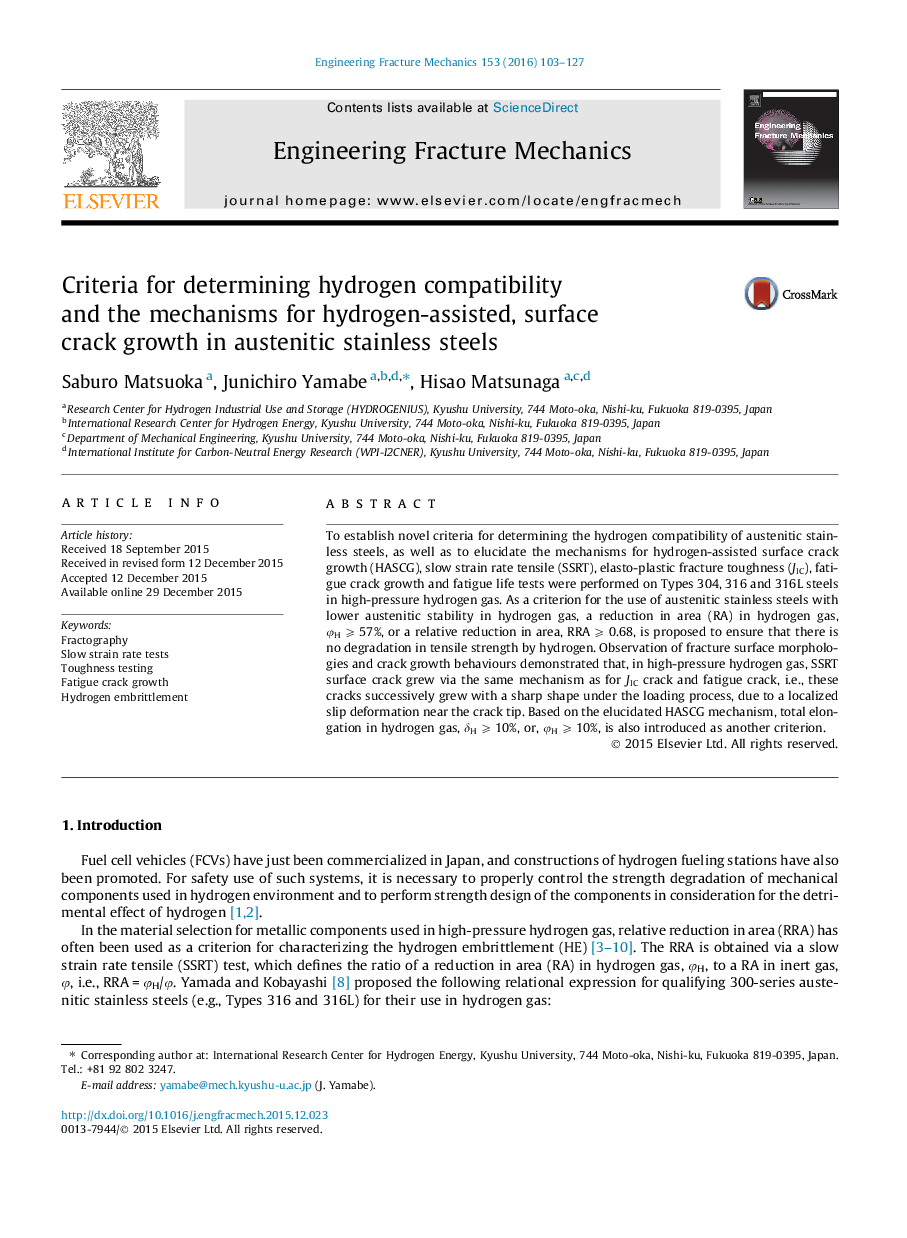| کد مقاله | کد نشریه | سال انتشار | مقاله انگلیسی | نسخه تمام متن |
|---|---|---|---|---|
| 770171 | 1463075 | 2016 | 25 صفحه PDF | دانلود رایگان |
• Hydrogen compatibility of 300-series steels was investigated with gaseous hydrogen.
• Loss of tensile ductility was caused by hydrogen-assisted surface crack growth.
• Two criteria for determining hydrogen compatibility were proposed.
• One criterion was based on no degradation in tensile strength in hydrogen gas.
• The other criterion was based on the mechanism of surface crack growth.
To establish novel criteria for determining the hydrogen compatibility of austenitic stainless steels, as well as to elucidate the mechanisms for hydrogen-assisted surface crack growth (HASCG), slow strain rate tensile (SSRT), elasto-plastic fracture toughness (JIC), fatigue crack growth and fatigue life tests were performed on Types 304, 316 and 316L steels in high-pressure hydrogen gas. As a criterion for the use of austenitic stainless steels with lower austenitic stability in hydrogen gas, a reduction in area (RA) in hydrogen gas, φH ⩾ 57%, or a relative reduction in area, RRA ⩾ 0.68, is proposed to ensure that there is no degradation in tensile strength by hydrogen. Observation of fracture surface morphologies and crack growth behaviours demonstrated that, in high-pressure hydrogen gas, SSRT surface crack grew via the same mechanism as for JIC crack and fatigue crack, i.e., these cracks successively grew with a sharp shape under the loading process, due to a localized slip deformation near the crack tip. Based on the elucidated HASCG mechanism, total elongation in hydrogen gas, δH ⩾ 10%, or, φH ⩾ 10%, is also introduced as another criterion.
Journal: Engineering Fracture Mechanics - Volume 153, March 2016, Pages 103–127
